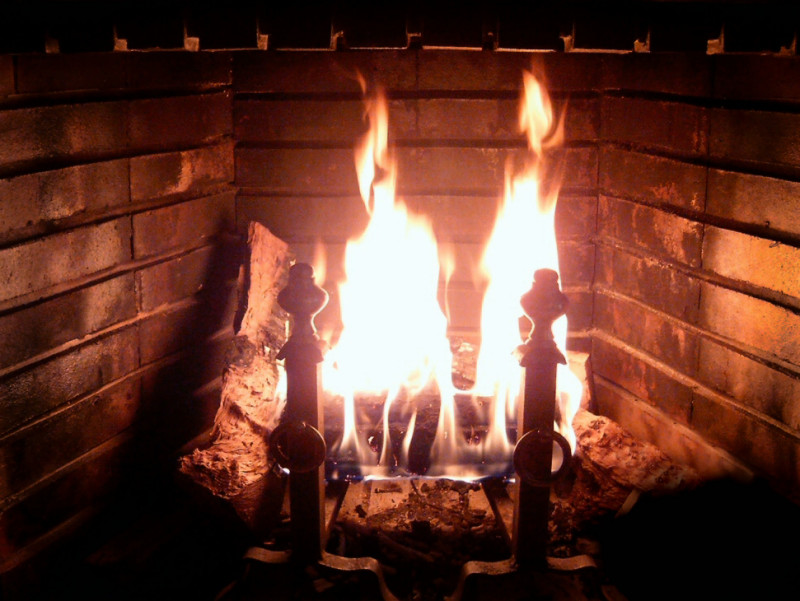Picture this. It is the dead of winter and roads are covered with several feet of snow, making it impossible for anyone to reach your home. And then the power goes out. Now you’ve got no stove so that electric fireplace you had just installed is no good, and you can barely see your surroundings.
It sounds like an absolute nightmare, doesn’t it? That situation could easily turn into a horror movie plot as time unfolds and your need for the necessities that electricity provides becomes more and more severe.
However, having the electricity in your home go out during winter does not have to spell doom and gloom for you and your household. With a few simple tips, let me – a Canadian, if that provides any credibility – tell you how to make it through a winter power outage.
Remember what’s important
When the power goes out and it’s some ungodly temperature outside, forget about your laptop or television. You need to stay warm and hang onto the temperature your body was at before your heat went out.
This means you may have to boot up the old gas fireplace. This obviously requires some planning as you’ll need to have firewood prepared to burn. It is a good idea to have enough to last a few days ready at all times during the winter. Make note though, the heat generated from a fireplace does not spread through an entire home evenly. To stay warm, keep close to the fire.
Staying warm while you sleep
Maintaining your body temperature while you sleep is incredibly important. If you live in a two story home, you’ll need to take careful steps to ensure proper heat distribution throughout your home. Assuming your fireplace is on the first level of your home, as most are, seal off – to the best of your ability – all doorways on the upper level.
The reason for this is that heat rises. You do not want to have all the heat you are trying to contain on the first level of your home increasing to the second story and staying there. Mind you, you’re in no way preventing this entirely by blocking off bedroom doorways, but you are helping somewhat.
From a safety point of view as well, you do not want to leave a fire running on the first level while you sleep upstairs. Bad idea. Stay close to the fire and try to contain the heat in that area as much as possible.
Bedding
As much as 10 per cent of our body heat is lost through our heads according to a 2008 report in BMJ. When the temperature in your house is limited, you’ll want to sleep with a hat. Extra blankets should also be on your list.
Kerosene heaters
Honestly, I would avoid these altogether if I could. Kerosene heaters give off a ton of carbon monoxide and will release quite a bit of heat up the flue of your fireplace, so much that it’s a bit unjustifiable for a heating method.
If you decide not to heed my warning, please make sure you’ve at least got a few battery operated carbon monoxide detectors around your house, especially if you have small children. They are affected by carbon monoxide poisoning much quicker than adults.
Cooking
Ok, so by now you’ve got a few pointers for staying warm. But eventually you’ve got to eat, right? And no, ordering pizza in this scenario isn’t an option. The roads are brutal, remember? No matter how desperate for cash your neighbourhood flock of rockstar-by-night pizza delivery boys are, they’re sitting this one out.
You can make your own food in your fireplace or on a wood burning stove. Keep plenty of cast-iron cookware around for situations like this. An open fire or grill outdoors is also an option if you’re able to brave the cold for a short amount of time.
Lighting
Lighting, while not necessarily crucial to your survival, is essential to getting around in a safe fashion. Keep plenty of battery-powered flashlights around your house and be sure to stock up on batteries. I keep one in every room of my house so that, in case everyone’s spread out over the entire house when the power fails, we’re all able to get around without faceplanting down the stairs.
Also, keep a few lighters and candles around your house but remember to be safe and blow candles out before you hit the sack.
Review
I realize the tools you’ll need are a bit scattered throughout this piece, so to ensure that you will have everything you need, here’s a handy list:
- A wood burning stove and the means/knowledge to install it in your fireplace
- Firewood
- A kerosene heater
- Lumbering tools to restock firewood if necessary
- Candles and flashlights
- Matches and lighters
- Several gallon buckets for collecting water
- Plenty of blankets and warm clothing
Conclusion
Hopefully you’ll never become in dire need of this guide but should you, I hope I’ve done a good job of showing you the basics to survive in winter without electricity.
While cutting off heat to your house completely won’t be good at all for your pipes, it might be a good idea to have a practice run at this for a day or night with your family so that things go naturally if the real deal ever hits.
Source:
Off The Grid News




